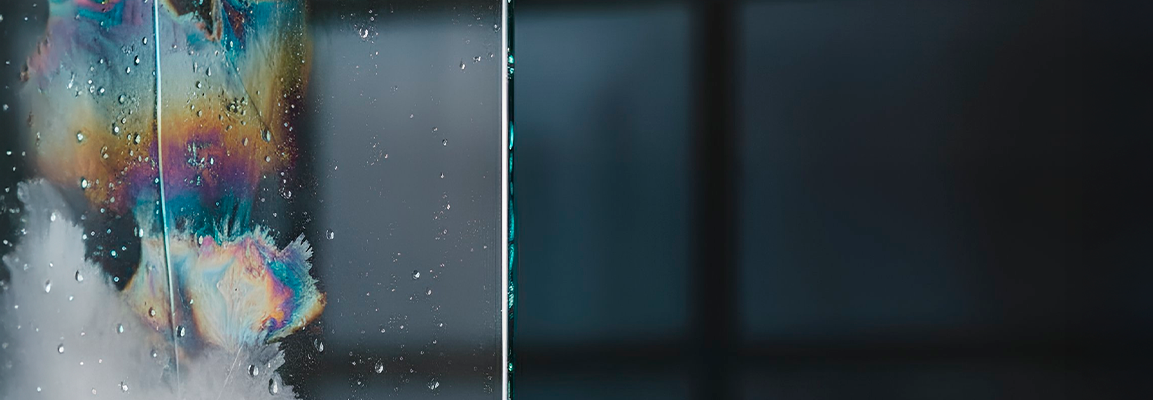×

☰


Is your glass fabrication facility facing high rejection rates due to laminated glass delamination or persistent surface stains in storage? For every glass industry executive, each rejected pane represents a direct financial loss. The root cause of these costly defects is often a silent, invisible culprit: ambient air humidity.
Understanding the cause-and-effect of these defects is not merely a technical concern; it is a strategic necessity for maintaining product quality, ensuring client satisfaction, and safeguarding your business's financial health. We recognize the significant impact that iridescence (rainbow stains) and delamination can have on an entire batch and your bottom line.
Before escalating into a financial burden, uncontrolled humidity leaves clear evidence on the glass surface and structure. Identifying these symptoms is the first step toward accurate diagnosis and mitigation.
| Defect (North American Terminology) | Description | Affected Products | Root Cause Related to Moisture |
|---|---|---|---|
| Delamination | The loss of adhesion between the glass lites and the polymer interlayer (PVB/EVA), resulting in air bubbles and separation. | Laminated Glass, Safety Glass, Bullet-Resistant Glazing | Moisture ingress prevents maximum bond strength during lamination and storage. |
| Iridescence (Rainbow Stains) | Opaque or rainbow-like stains that appear on the glass surface, particularly in stacked sheets. | All Glass Types, especially in storage | Chemical reaction (hydrolysis) between atmospheric water and the glass surface, leading to alkaline corrosion. |
| Milky Stains/Opacity | Loss of glass transparency, acquiring a whitish or hazy appearance that cannot be removed by standard cleaning. | All Glass Types | Advanced stages of surface corrosion and chemical alteration. |
| "Black Edge" Corrosion | Moisture attacks the metallic reflective layer of mirrors, causing dark spots and oxidation, primarily at the edges. | Silvered Mirrors | High humidity and chemical agents reacting with the silver backing. |
Visual defects are only the tip of the iceberg. The true impact of uncontrolled moisture is measured in financial losses that erode your operation’s profit margin.
Industry estimates suggest that losses due to delamination can reach up to 7% of production, while rejection due to iridescence and alkaline corrosion may affect up to 12% of batches in facilities without proper humidity control [1]. Furthermore, delamination in bullet-resistant glass can compromise its ballistic integrity, an unacceptable safety risk.
The cost manifests in several ways:
Despite appearing inert, the glass surface chemically reacts with water molecules ($H_2O$) present in the air. This reaction, known as hydrolysis, forms a microscopic layer of silanol ($Si-OH$), which alters the glass's surface properties. This silanol layer is the starting point for all subsequent problems:
To eliminate the negative impacts of moisture, the solution must be equally precise. The only way to prevent the hydrolysis reaction and its consequences is to maintain the Relative Humidity (RH) of the air within strictly controlled levels, both in the production and storage areas.
Beyond humidity, airborne microparticles are a critical factor in the lamination environment. Dust adhering to the PVB or EVA before fusion can cause optical imperfections, delamination, and adhesion failures between the lites.
This solution is the gold standard for critical processes:
A desiccant dehumidifier, integrated with a Fan Coil Unit (FCU) and filtration system, also acts as an air purification element. It draws in air with suspended particles, traps impurities in internal filters, and returns clean, dry air to the environment. This is essential for a controlled environment, protecting the PVB/EVA interlayer from contamination that compromises adhesion and transparency.
Controlling humidity means:
In the North American market, humidity control is not just a best practice but is often an implied requirement for compliance with key industry standards. Meeting these standards ensures quality assurance and provides legal protection.
| Standard (North America) | Focus | Relevance to Humidity Control |
|---|---|---|
| ASTM C1172 | Standard Specification for Laminated Architectural Flat Glass | Defines quality requirements; moisture control is essential to meet adhesion and visual quality criteria. |
| ASTM C1349 | Standard Specification for Architectural Flat Glass-Clad Polycarbonate | Relevant for bullet-resistant and security glazing; moisture control is critical for maintaining ballistic integrity and preventing delamination. |
| ANSI Z97.1 | Safety Glazing Materials Used in Buildings | Establishes specifications and test methods for safety properties; delamination (caused by moisture) can lead to failure of impact tests. |
| ASTM E2190 | Standard Specification for Insulating Glass Unit Performance and Evaluation | Defines performance criteria for Insulating Glass (IGUs); moisture control is vital in the manufacturing process to ensure a low dew point in the air space. |
| ASTM C1503 | Standard Specification for Silvered Flat Glass Mirror | Relates to mirrors; moisture control is necessary during storage and installation to prevent "black edge" corrosion. |
Investing in precise humidity control is a strategic decision that yields a clear and measurable Return on Investment (ROI) through:
Don't let an invisible factor continue to generate visible losses on your balance sheet. It is time to address the root cause of the problem with a targeted desiccant dehumidification solution.
Prefer a personalized analysis of your facility? Schedule a no-obligation consultation with one of our engineers and learn how industrial dehumidification solutions can be applied to your specific needs.